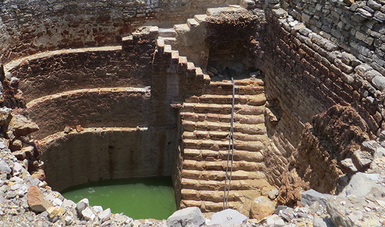
Geochemistry
The geochemical maps show the interpretation results of the content analysis in stream sediment samples, and are produced according to approved parameters of well known experienced authors and researchers. The standards are currently applied in most of the international companies and government entities. Sampling density is defined according to the surveying scale, averaging the next values:
- 1:50,000 scale, maximum samples, 210
- 1:250,000 scale, maximum samples, 660
The aforementioned is also a function of the topographic accessibility and the drainage net, so the search establishes 1 sample for each 5 km2 in 1:50,000 scales and 1 sample each 40 km2 in the 1:250,000 scale.
The main goal of the geochemical maps is to supply a tool able to support the mineral deposits prospection trough the analysis and results of the statistical data and the sampling values, in combination with the geological framework provided by the geologic-mining maps.
Methods
The sediment stream samples are collected under uniform climate conditions, preferably in dry season to avoid the stream flow in the rainy period.
Each sample is screened to -80 meshes, packed in Kraft paper bags, and then protected with an additional plastic bag to keep away any eventual contamination. In order to detect elements that could alter the original secondary dispersion contents, a previous monitoring of the mining and urban zones within the basin, is performed.
Geochemical information is, by itself, strong valuable, but it can be more conclusive when is used together with geological and geophysical information. The percentile statistical treatment of the contents, objectively exhibits the contrasts as referred to the background. The responses are defined with three size circles and colors: the red –the highest– show the maximum anomalous concentration of the element; the ones in orange and yellow, are values progressively lower.
The elements usually edited are gold, silver, lead, zinc and copper –can be absent when the concentration is not significant compared with the general background. Other elements are determined when they show affinity after the statistical analysis and, additionally, according to the geologist’s experience, which is able to suggest that certain elements should be included based in the mineralization model.
Analysis
All the stream sediment samples are shipped to the SGM labs (Experimentation Centers) and assayed for 31 elements. The analysis is performed in a plasma emitting spectrometer (ICP), except gold, which is determined by fire assay, and the volatile elements Sb, As, Te, Se, Sn and Bi that are first stabilized in a hydrides generator, and then quantitatively determined.
The lab delivers the results in parts per million (ppm), excepting iron which is previously asked in percentage. The gold tellurium and selenium values are transformed into ppb, and so are reported in the final map.
Map content
Ten to sixteen different maps are edited, one for each element –usually the ones with more affinity with the mineralization model– according with the values and the statistical work out which marks the element response dispersed in the active stream sediment carried by the watercourse.
Edition
Sample taking and its location as well as the statistical job, are supervised by the Geology and Geochemical manger. Once the material is collected and the information completed, is delivered to the Geomatic area where the layers are digitalized and a topographic base is added. After this, the map is edited under a Geographic Information System Arc/Info that comprises all the necessary attributes that finally are issued to the user.
Products
Geochemical maps are available in 1:250,000 and 1:50,000 scales in paper or in digital format, one for each element. Under request, the maps may incorporate any additional level, coverage or theme. Moreover, the lab result tables with sample coordinates, or the Arc/Info digital layers, are also accessible.
It is highly recommended to handle the Arc/View digital interactive maps as they contain all the themes and information layers, so the user may combine all the available coverage to widen his vision, and make better decisions on his mineral prospection.
For further information, please contact:
Dr. Juan Carlos Salinas Prieto
Gerente de Geología y Geoquímica
Tel.: 01(771) 711-39-30
juancarlossalinas@sgm.gob.mx
 Geochemistry
Geochemistry
- Autor:
- Servicio Geológico Mexicano
- Fecha de publicación:
- 26 de septiembre de 2017
La legalidad, veracidad y la calidad de la información es estricta responsabilidad de la dependencia, entidad o empresa productiva del Estado que la proporcionó en virtud de sus atribuciones y/o facultades normativas.